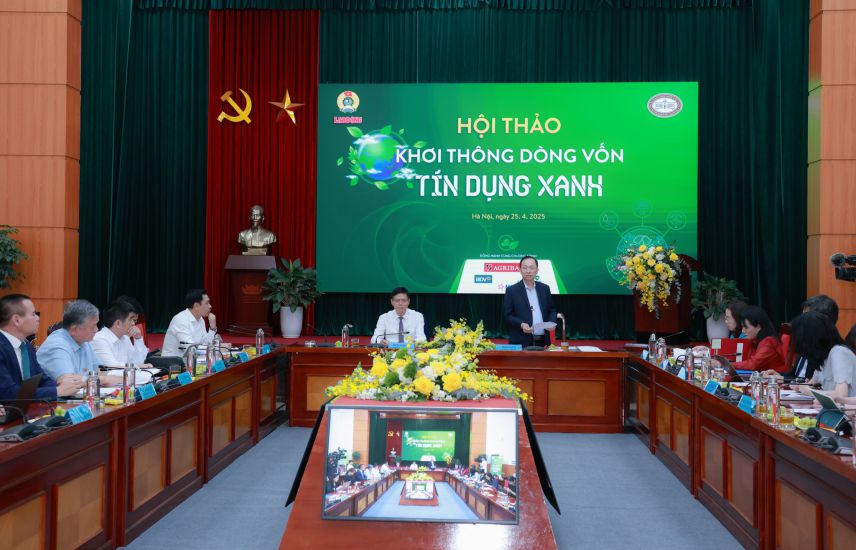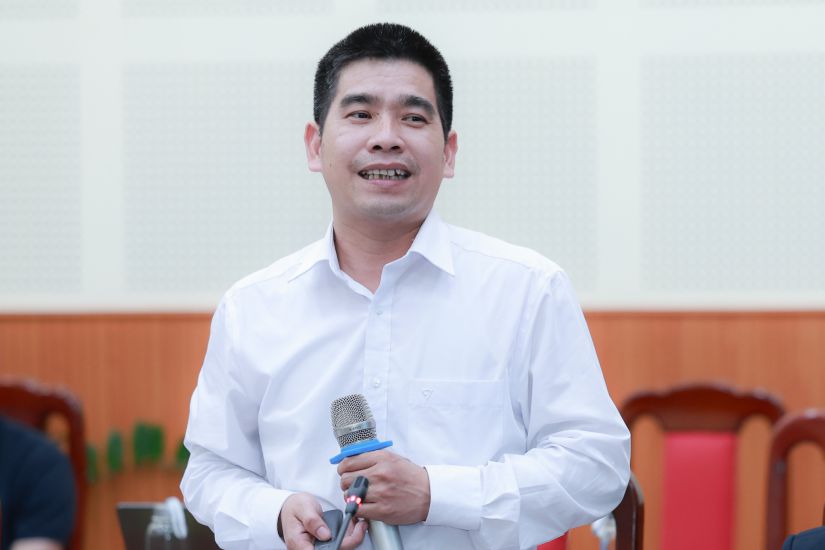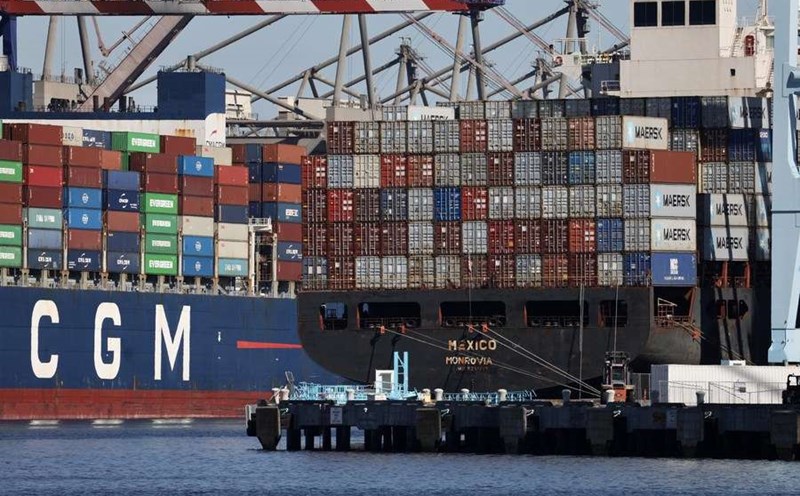Green credit is an inevitable requirement of a green economy
Permanent Deputy Governor of the State Bank of Vietnam Dao Minh Tu affirmed that green credit and ESG implementation have become an inevitable trend in the process of sustainable development. This is not only a long-term orientation, but a mandatory requirement in the context of Vietnam's efforts to restructure the economy, innovate the growth model and implement international commitments on emission reduction.
Green finance, including green credit, is not a new issue, but it is receiving more and more attention as it is an important tool to move the economy towards the goal of green growth, carbon neutrality and social justice, the Permanent Deputy Governor emphasized.
According to him, the banking industry has taken proactive action with encouraging results such as the rapid increase in the number of credit institutions participating in green finance, the average growth rate of green credit balance in the period of 2017-2024 reached more than 22,2%/year.
However, Mr. Dao Minh Tu also pointed out that the green credit ratio currently only accounts for about 4.6% of the total outstanding loans of the whole system - a figure that is still too modest compared to the current development potential and requirements. The lack of a national green classification portfolio, the lack of tools to determine ESG standards, as well as long-term risks and long capital recovery time are making many banks and businesses hesitant to implement in practice.
Green transformation cannot be just a slogan. It requires real capital flow and coordination of the entire system, from institutions, markets to awareness - Mr. Dao Minh Tu emphasized.
In particular, in the context that developed countries such as the EU have officially applied the carbon border adjustment mechanism (CBAM) from January 1, 2026, Vietnamese enterprises will face a huge barrier if they do not meet emission standards. Unblocking green credit is not only a matter of economic development, but also an issue of integration and maintaining the country's competitiveness.
Green credit can only operate effectively when the whole system is involved in a synchronous, flexible and substantial manner, concluded Mr. Dao Minh Tu.
Ms. Ha Thu Giang - Director of the Department of Credit for Economic Sectors (State Bank) - added that by the end of 2024, outstanding green credit in the whole system reached nearly 680,000 billion VND, an increase of 9.5% compared to 2023. Of which, more than 70% focuses on the fields of renewable energy and green agriculture. Ms. Giang said that in addition to issuing Circular 17 on environmental risk management, the State Bank is coordinating with ministries and branches to complete the green classification portfolio and support policy system.
However, challenges remain, including difficulties in identifying green projects, lack of environmental risk assessment information, lack of long-term capital and especially limitations in the appraisal capacity of credit institutions themselves. Ms. Giang emphasized: "To develop a green financial market, there must be a synchronous ecosystem - from legality, data to the implementation capacity of all parties".

Banks play a central role in the green financial ecosystem
From the perspective of commercial banking, Mr. Vuong Thanh Long - Deputy Head of BIDV Capital and currency Business - affirmed that green finance is a consistent strategy in all of BIDV's operations over the years. By the end of 2024, BIDV's outstanding green credit reached nearly VND 81,000 billion, accounting for about 12% of the industry market share.
Mr. Long shared: The bank plays a central role in the green financial ecosystem - not only as a direct capital provider, but also as a unit that orients, connects partners and promotes the green transformation journey of businesses. BIDV currently owns all green financial frameworks such as: Environmental - social risk management framework (ESMS), sustainable loan framework, green bond framework and sustainable bonds - all of which are highly rated by Moody's. BIDV also implements loans linked to ESG targets, combined with technical support to help businesses prepare emission reports, inventory greenhouse gases and access international capital. However, Mr. Long said that there should still be clearer regulations on green criteria for banks to implement consistently and limit risks when assessing.
Meanwhile, Ms. Phung Thi Binh - Deputy General Director of Agribank - shared that Agribank is very eager to lend to green projects, but there are many barriers. A typical example is the issue of collateral. Many businesses that rent land, have not been granted red books or only have assets invested in land (such as greenhouses, greenhouses), it is difficult to value or mortgage according to current regulations. Continuously changing policies make it difficult for banks to determine investment efficiency, especially in the fields of renewable energy and biomass electricity.
Agribank's leaders proposed to soon issue a national green classification portfolio, and at the same time, there should be a mechanism to confirm greenness for projects using budget capital or commercial loans so that the bank can confidently implement. Agribank proposes to have a risk support fund dedicated to agriculture - a sector with many risks but also has great room for green transformation.
Sharing at the workshop, representatives of the Ministry of Agriculture and Environment shared the progress of completing the Green Classification List - a bottleneck for green credit flows.

Dr. Lai Van Manh (photo) - Head of the Department of Natural Resources and Environment Economics, Institute of Strategy and Policy on Agriculture and Environment (Ministry of Agriculture and Environment) - said that Vietnam has made important strides in the legal foundation for green credit.
The 2020 Environmental Protection Law for the first time provides a separate concept and regulation on green credit (Article 149) and green bonds (Article 150). Decree 08/2022/ND-CP then continued to specify green finance incentive mechanisms. The Ministry of Natural Resources and Environment is currently developing and submitting to the Government for approval the Green Classification List - a tool expected to become a set of technical criteria for credit institutions to apply consistently when determining projects that meet the conditions for accessing green capital.
However, according to Dr. Manh, the reality has many barriers. Countries in the world have different approaches to the list of green classification, institutions, environmental goals and national monitoring capabilities. Vietnam needs to choose the right roadmap to build a scientific and feasible classification system in practice. In addition, it is necessary to continue improving the organizational system, coordination mechanism and database for evaluation and confirmation of green projects.
Recently, the Ministry of Natural Resources and Environment and most recently the Ministry of Agriculture and Environment have been very active in drafting the Prime Minister's decision on environmental criteria for projects granted green credit and issued green policies.
Up to now, in the final stage and has reviewed and reviewed with relevant agencies such as the Ministry of Finance and the State Bank through the Ministry of Justice to appraise the draft documents and opinions of the Government Office. Up to now, the draft has been completed and in the near future, it is very hope to be signed by the Prime Minister.











